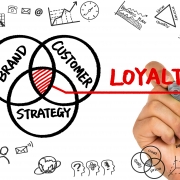BARE Shares – 10 Secrets Of Customer Engagement: Fine-Tuning The Customer Service Experience For Success
Harvard Business Review found that companies who successfully implement a customer experience strategy achieve higher customer satisfaction rates, reduced customer churn and increased revenues. Furthermore, research by American Express found that 60% of customers are willing to pay more for a better experience.
Customer experience (CX) is defined by interactions between a customer and an organization throughout their business relationship. An interaction can include awareness, discovery, cultivation, advocacy, purchases and service. So how do you perfect the art of creating a seamless customer service experience? Here, BARE International shares an article by Micah Soloman for Forbes in
10 Secrets Of Customer Engagement: Fine-Tuning The Customer Service Experience For Success.
‘For your business to have legs, it needs positively engaged customers; customers who enjoy their time with your business and who think positively about it when they’re away. Barring this, your business will remain interchangeable with your competition. And you’ll fail to make the impression you’re hoping for in the marketplace. [Note: I’m talking here about customer engagement in a customer experience and customer service framework, although many do think of it in more of a marketing context.]
Customer engagement is a result of superior customer service and a well-designed customer experience. To make the concept trickier, though, not every aspect of customer service and customer experience design and execution affect engagement equally. Here are ten places where you have an opportunity to make the most difference; use this list as a checklist you can return to any time you think things may be going astray, to ensure you’re on the right track.
1. Strive for a default of yes: Automatic positivity is a powerful way to ensure that you’re engaging your customers. The attitude every employee in your organization should exude is, “the answer is yes, now what is the question?” It’s not good enough to grudgingly, foot-draggingly, eventually carry out your customers’ wishes; you need to be giving them the impression, from the very first moment, that you’re going to take care of doing so.
2. Warm up your handoffs: In addition to being positive and warm-spirited in their interactions with your customers, your employees should be ensuring a seamless experience: cold transfers on the phone should be verboten, and any time a customer is handed off to a fellow employee for assistance, the originating employee should make a point of following up later to make sure that the issue was actually resolved, and that the customer feels happy with the resolution.
3. Don’t shuffle customers between employees and departments any more than is necessary. Chilly or warm, there should be as few handoffs from employee to employee as possible. One way a great company distinguishes itself is in how the employees react when a customer requests something that is a little off-track for the core of that employee’s duties. The wrong answer is, “You’ll need to call back and ask for Judy in client services.” The right answer is, “Absolutely, I can help you with that,” even if that help means running down the hall to Judy to find the needed information.
4. Be sure to respect each customer’s invisible protective bubble: A common way to turn off customer engagement is to attempt interactions with customers when they’re not in the mood. The concept here, which should be part of the training of every employee, is that every customer is surrounded by an individual, invisible, protective bubble. This bubble should onlybe entered after receiving implied permission from the customer. Employees need to learn to recognize when it’s okay to venture into the customer’s protective bubble—the invisible “meditation chapel” within which the customer has an expectation of solitude–as well as how to interact with the customer while that bubble is open, and how and when to graciously make an exit.
Doing so depends on level of employee sensitivity, of course, but benefits greatly from the framework that I’ve codified as the BUBL (pronounced “bubble”) method, which you can learn about here.
5. Make sure your service style strikes customers as authentic, rather than as overly formal and scripted. As Richard Branson and I discuss here, today’s customers recoil from “Stepford customer service,” where employees seem stiff, interchangeable, and soulless. If you’re striving for customer engagement, make sure your employees feel permitted to bring a bit of their own personalities to the manner in which they serve their customers.
6. Beware of the Cliff of Dissatisfaction: The Cliff of Dissatisfaction is the moment when customers lose faith that your business will be able to serve you on their own timetable–fast enough, late enough at night and early enough in the morning, and so forth. And believe it: In our sped-up, 24-7 society, customers take it personally, and quickly disengage, if you don’t serve them on their own schedule.
7. Make sure your employees know how to apologize, and how to carry out customer service recovery when needed. Employees who are perfectly fine when things are going smoothly can be absolutely death to customer engagement if they don’t know what to do when a customer complains. It’s natural for them to reflexively take a defensive posture, but it’s also catastrophic.
8. Money-related turnoffs: No matter how well you design and execute every other part of the customer experience, you can quickly disengage–or worse–a customer if you handle issues of money awkwardly, or rudely, or thoughtlessly.
9. Be sure you’re providing personal recognition and remembrance. One of the best ways to engage customers is to provide them personal recognition and to personally remember them in their absence and when they return. And failing to do so is one of the most direct routes to turning yourself into a commodity, in the eyes of your customer.
10. Watch your language. Language is a quick way to turn customers off, particularly if the language is harsh, prescriptive, judgmental or abrupt. A couple of examples: Avoid telling a customer “you need to do X”; try “we find it works best if you do X”; don’t baldly tell a customer “you owe us X”; instead try, “our records indicate a balance of X”; don’t say “please hold” and immediately press the hold button; instead ask, “may I place you on a brief hold?” and wait for the answer. To solve the language issue once and for all, I generally create a language lexicon or phrasebook with my clients to cover language needs and potential missteps (more on this here) in an approach I refer to as “language engineering.”
Watch out as well for harsh linguistic missteps in the boilerplate on your invoices, website, and printed collateral; these can be negatively affecting customer engagement, even if you get everything else right.’
Customer expectations are higher than ever and word of mouth travels fast!
As the customer becomes even more empowered, it increases the importance of engaging the customer. Ultimately this is an area that increasingly needs constant nurturing and care and with a greater focus on customer experience strategy. In doing so, companies like yours will realize a positive impact on customer loyalty, higher retention and increased revenues. BARE International’s Customer Experience Research provides you with a valuable insight into your business from every angle, including how you’re engaging the customer.
Are you struggling to keep your customers engaged? Tell us a bit about your business here and what keeps you up at night. We can help.











